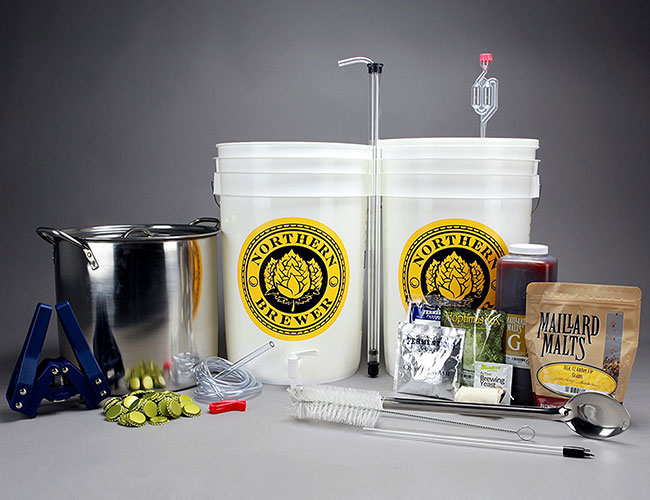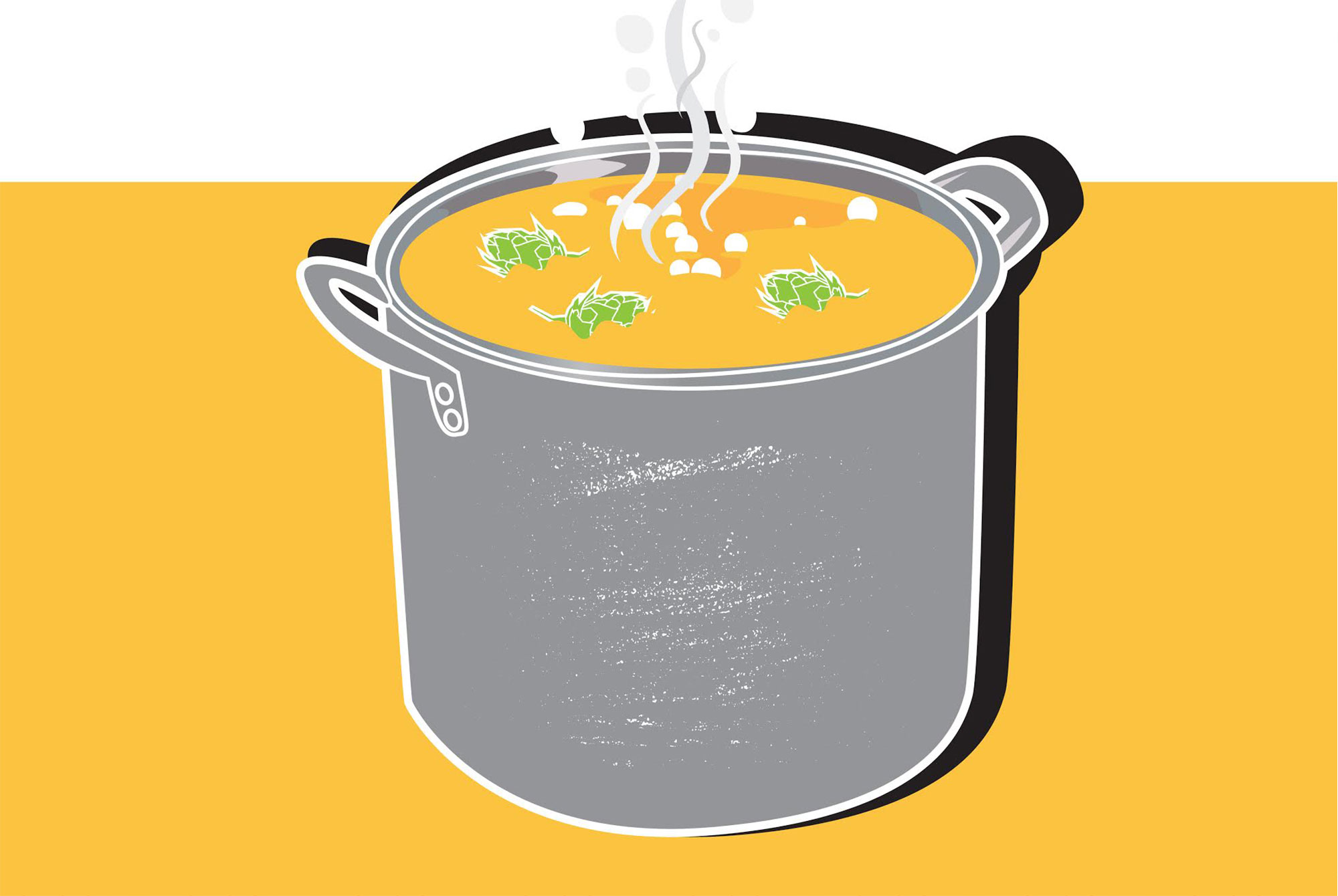Shop
How to Talk About Wort Like a Brewer
Think of a giant tea bag, then add hops.
Imagine a tea bag steeping in hot water that will soon warm your hands, belly, and soul. The herbal characteristics seep into the water and impart a flavor, whether it be a black, green, or peppermint tea, while you wait for the scalding liquid in the ceramic mug to cool to a drinkable temperature. Manufacturers recommend a longer steep for a stronger flavor. Once you remove the tea bag (or whatever device holds the tea leaves), you’re left with a warm beverage that has taken on the flavors from the once dry tea leaf/spice mixture.

Want to Brew Beer?
The equipment to brew beer — and therefore make wort — can be assembled from parts purchased at a local hardware store, or purchased online in convenient kits.
Okay, now picture the same process but with malted barley steeping in water in a giant spaghetti pot on your stovetop: your first small batch of homebrew is underway. As the water boils away, the enzymes in the barley, put into a hungry frenzy by the heat, start breaking down the starches, turning them into sugars. These sugars will eventually serve as the food for yeast, which turns them into alcohol and carbon dioxide. As the boil progresses, you’ll likely be adding hops at varying times depending on the recipe. After about an hour, the boil is complete and the grain bag (which looks just like a giant tea bag) is removed. The flavors from the grain (as well as the hops) have been imparted to the liquid.
Once the grains are removed from the pot, the liquid that remains is called wort. The wort is then rapidly chilled, poured into a fermentation vessel (carboy) with some yeast, where it rests for two to three weeks until it’s transferred to a secondary fermentation vessel. Wort, then, is the liquid foundation for all beer.



